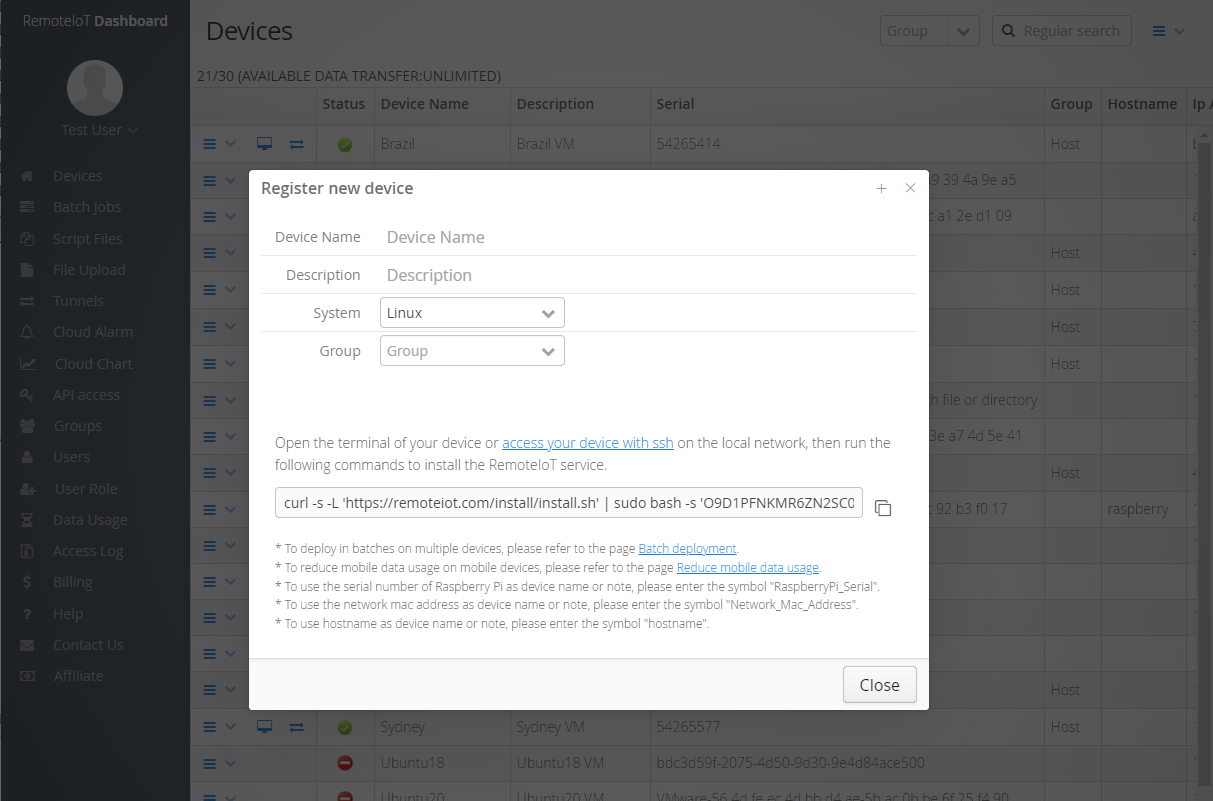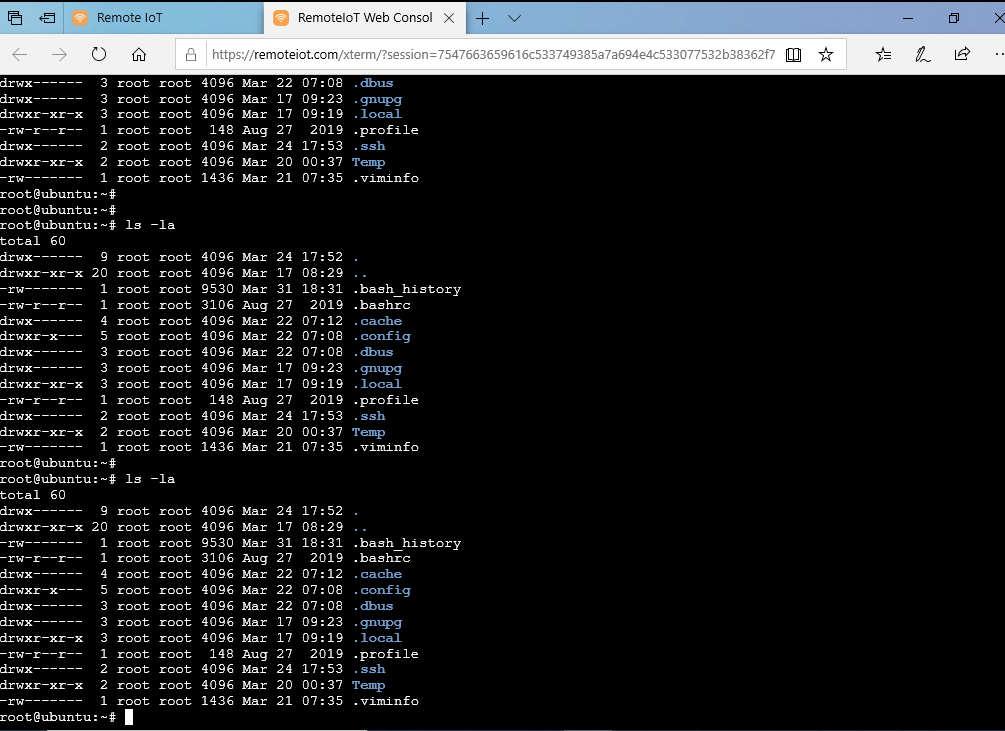SSH IoT device remotely not working is a common issue that many users face. If your IoT device refuses to connect via SSH, it can be frustrating, especially if you rely on remote access for monitoring or troubleshooting. This article will guide you step-by-step to identify and resolve the problem.
As the Internet of Things (IoT) continues to grow, more devices are being connected to the internet for remote management. However, connectivity issues such as SSH not working can disrupt your workflow. Understanding the root cause of the problem is essential to maintaining a seamless IoT experience.
In this article, we will explore why SSH IoT device remotely not working occurs, how to troubleshoot it, and what steps you can take to ensure smooth connectivity. Let’s dive in!
Table of Contents
- Introduction to SSH IoT Devices
- Common Issues with SSH IoT Devices
- Troubleshooting SSH IoT Device Remotely Not Working
- Network Configuration for IoT Devices
- Firewall Settings and SSH
- SSH Configuration Best Practices
- Security Measures for IoT Devices
- Useful Tools for SSH IoT Troubleshooting
- Advanced Techniques for Resolving SSH Issues
- Conclusion and Next Steps
Introduction to SSH IoT Devices
SSH (Secure Shell) is a cryptographic network protocol used for secure communication between devices over an unsecured network. IoT devices often rely on SSH for remote access and management. However, when SSH IoT device remotely not working, it can hinder your ability to manage these devices effectively.
IoT devices are designed to be lightweight and resource-efficient. This means that their SSH implementations may vary, and certain configurations might be more prone to connectivity issues. Understanding the basics of SSH and how it interacts with IoT devices is the first step in resolving connectivity problems.
How SSH Works in IoT
SSH establishes a secure connection by encrypting data transmitted between devices. In IoT, this is crucial for protecting sensitive information such as configuration files, firmware updates, and diagnostic data. However, if the SSH service is not running properly, the device may fail to respond to remote connections.
Common Issues with SSH IoT Devices
Several factors can contribute to SSH IoT device remotely not working. Below are some of the most common issues:
- Incorrect IP address or hostname
- Firewall blocking SSH traffic
- SSH service not running on the device
- Network configuration errors
- Authentication failures
Understanding Network Connectivity
IoT devices often operate on local networks or through cloud-based platforms. If the device is not properly configured, it may fail to establish a connection with the SSH client. Ensuring that the device is on the correct network and has the right IP address is critical.
Troubleshooting SSH IoT Device Remotely Not Working
When SSH IoT device remotely not working, the first step is to diagnose the problem. Below is a step-by-step guide to help you troubleshoot the issue:
Step 1: Verify the IP Address
Ensure that the IoT device has a valid IP address. You can check this by logging into the device locally or through its web interface. If the device is using DHCP, make sure that the DHCP server is functioning correctly.
Step 2: Check SSH Service Status
Use the following command to check if the SSH service is running on the IoT device:
systemctl status ssh
If the service is not running, start it using:
systemctl start ssh
Step 3: Test Connectivity
Use the ping command to test if the device is reachable from your network. If the device responds, proceed to test the SSH connection using:
ssh username@device_ip
Network Configuration for IoT Devices
Proper network configuration is essential for ensuring that SSH IoT device remotely not working issues are minimized. Below are some best practices:
Static vs Dynamic IP Addresses
Assigning a static IP address to your IoT device can help prevent connectivity issues caused by DHCP lease expiration. To set a static IP, modify the network configuration file on the device:
sudo nano /etc/dhcpcd.conf
Add the following lines:
interface eth0
static ip_address=192.168.1.100/24
static routers=192.168.1.1
static domain_name_servers=8.8.8.8
Port Forwarding
If your IoT device is behind a router, you may need to configure port forwarding to allow SSH traffic. Most routers use port 22 for SSH. Ensure that this port is open and forwarded to the IoT device’s internal IP address.
Firewall Settings and SSH
Firewalls can block SSH traffic if not configured correctly. Check your firewall settings to ensure that port 22 is allowed. Use the following command to allow SSH traffic on a Linux-based firewall:
sudo ufw allow 22
Cloud-Based Firewalls
If your IoT device is hosted on a cloud platform, ensure that the security group or firewall rules allow SSH traffic. For example, on AWS, you can add an inbound rule to allow TCP traffic on port 22.
SSH Configuration Best Practices
Configuring SSH properly can help prevent connectivity issues. Below are some best practices:
Use Strong Authentication
Disable password authentication and use SSH keys instead. This improves security and reduces the risk of brute-force attacks. To generate an SSH key pair, use:
ssh-keygen -t rsa -b 4096
Limit Access
Restrict SSH access to specific IP addresses or subnets. This can be done by modifying the SSH configuration file:
sudo nano /etc/ssh/sshd_config
Add the following line:
AllowUsers username@192.168.1.0/24
Security Measures for IoT Devices
Security is paramount when managing IoT devices remotely. Below are some security measures to consider:
Regular Updates
Keep your IoT device’s firmware and software up to date to protect against vulnerabilities. Use automated update mechanisms if available.
Monitor Logs
Regularly review SSH logs to detect and respond to suspicious activity. Logs can be found in:
/var/log/auth.log
Useful Tools for SSH IoT Troubleshooting
Several tools can assist in diagnosing and resolving SSH IoT device remotely not working issues:
- Wireshark: A network protocol analyzer that can capture and analyze SSH traffic.
- Netstat: A command-line tool for monitoring network connections and listening ports.
- Putty: A popular SSH client for Windows users.
Using Wireshark for SSH Analysis
Wireshark can help identify issues such as incorrect encryption algorithms or handshake failures. Filter the traffic by entering:
tcp.port == 22
Advanced Techniques for Resolving SSH Issues
For persistent SSH IoT device remotely not working problems, consider the following advanced techniques:
Reverse SSH Tunneling
If the IoT device is behind a NAT or firewall, you can use reverse SSH tunneling to establish a connection. This involves creating a tunnel from the IoT device to a publicly accessible server.
Debugging SSH
Enable SSH debugging to get more detailed information about connection issues. Use the following command:
ssh -v username@device_ip
Conclusion and Next Steps
In conclusion, SSH IoT device remotely not working can be caused by a variety of factors, including network configuration, firewall settings, and SSH service issues. By following the troubleshooting steps and best practices outlined in this article, you can resolve most connectivity problems.
We encourage you to share your experiences and solutions in the comments section below. Additionally, explore our other articles for more insights into IoT management and security. Thank you for reading, and happy troubleshooting!
References:


